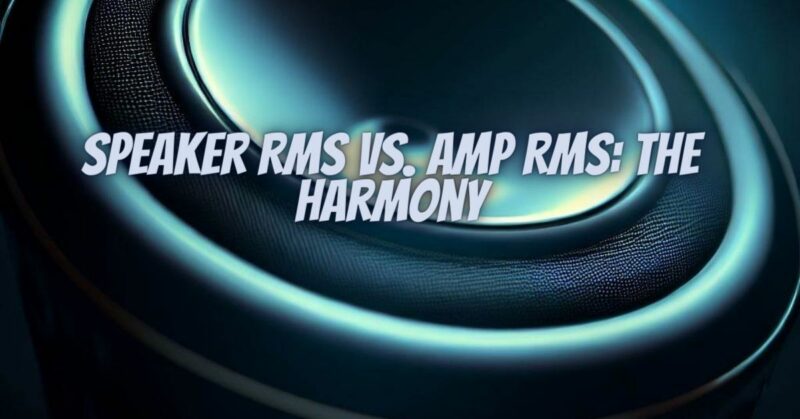When building or upgrading an audio system, understanding the relationship between speaker RMS (Root Mean Square) and amp RMS is crucial for achieving optimal sound quality and preventing damage to your equipment. In this article, we’ll explore the concept of RMS power, how it applies to both speakers and amplifiers, and the importance of harmonizing these ratings for a harmonious audio experience.
RMS Power: A Brief Overview
RMS power is a measure of continuous or sustained power handling capability. It’s used to express the maximum amount of electrical power that a speaker can handle continuously without distortion or damage. RMS power is a key specification for both speakers and amplifiers, and it’s often expressed in watts.
Speaker RMS Power
Speaker RMS power, also known as continuous power handling or continuous RMS, represents the maximum amount of power a speaker can handle for an extended period without suffering damage or distortion. This rating is crucial for ensuring that the speaker can handle the output from the amplifier without overheating or exceeding its mechanical limits.
Amplifier RMS Power
Amplifier RMS power, on the other hand, refers to the continuous power output that an amplifier can deliver to the connected speakers. This rating indicates how much power the amplifier can provide consistently without introducing distortion or clipping into the audio signal.
The Harmony Between Speaker RMS and Amp RMS
To achieve the best audio quality and prevent equipment damage, it’s essential to harmonize the RMS power ratings of your speakers and amplifier. Here’s why this harmony matters:
1. Preventing Damage:
- Underpowering: If the amplifier’s RMS power output is significantly lower than the speaker’s RMS rating, it may not provide enough power to drive the speaker properly. This can lead to distortion and potential damage to the amplifier.
- Overpowering: Conversely, if the amplifier delivers more power than the speaker’s RMS rating, it can overload the speaker, causing overheating, voice coil damage, and distortion.
2. Sound Quality:
- Matched RMS: When the RMS power ratings of the speaker and amplifier are well-matched, you achieve cleaner, distortion-free sound reproduction. The speaker operates within its intended power range, delivering accurate audio.
- Headroom: Having an amplifier with RMS power slightly higher than the speaker’s rating can provide dynamic headroom, allowing the system to handle transient peaks in the audio signal without clipping or distortion.
3. Efficient Performance:
- Energy Efficiency: Using an amplifier with an appropriate RMS rating helps ensure that you’re not wasting electricity by driving the speaker with excessive power.
How to Harmonize Speaker RMS and Amp RMS
To achieve harmony between speaker RMS and amp RMS:
- Match RMS Ratings: Choose speakers and amplifiers with RMS power ratings that closely match or slightly exceed each other. This ensures that the power supply is balanced and prevents underpowering or overpowering.
- Check Impedance: Ensure that the speaker’s impedance (measured in ohms) is compatible with the amplifier’s output impedance. Mismatched impedance can lead to inefficient power transfer and affect sound quality.
- Review Manufacturer Recommendations: Manufacturers often provide guidelines for matching their speakers with compatible amplifiers. Refer to these recommendations for a reliable match.
- Seek Professional Advice: If you’re unsure about the compatibility between a specific speaker and amplifier, consult with audio experts or seek advice from professionals who can provide tailored recommendations.
Harmonizing speaker RMS and amp RMS ratings is vital for achieving the best possible audio quality and preventing damage to your equipment. Matching these power ratings ensures that your audio system operates efficiently, delivers accurate sound reproduction, and remains free from distortion. Whether you’re building a new audio setup or upgrading an existing one, taking the time to understand and balance these power ratings is essential for a harmonious and enjoyable audio experience.


